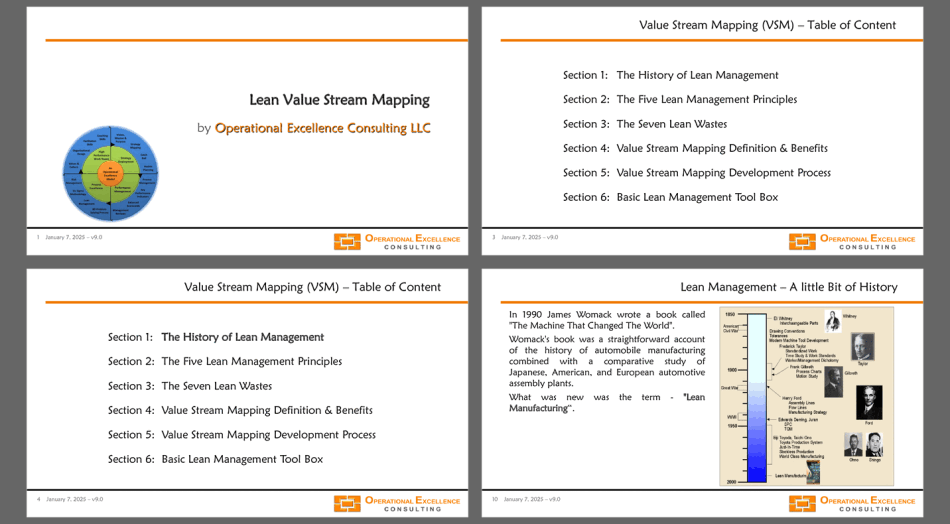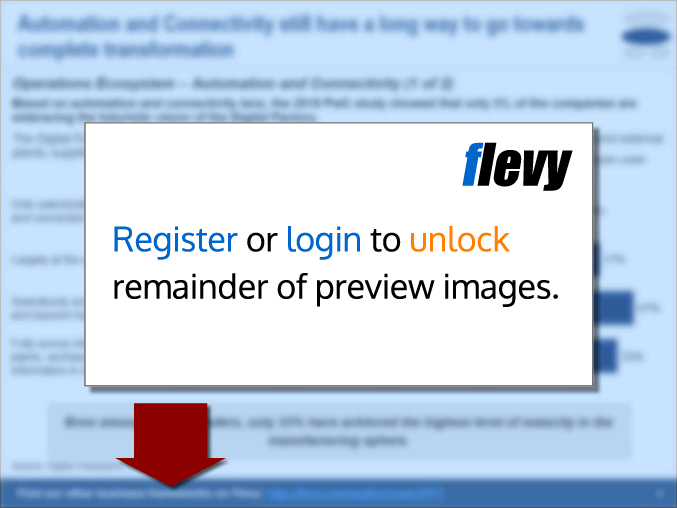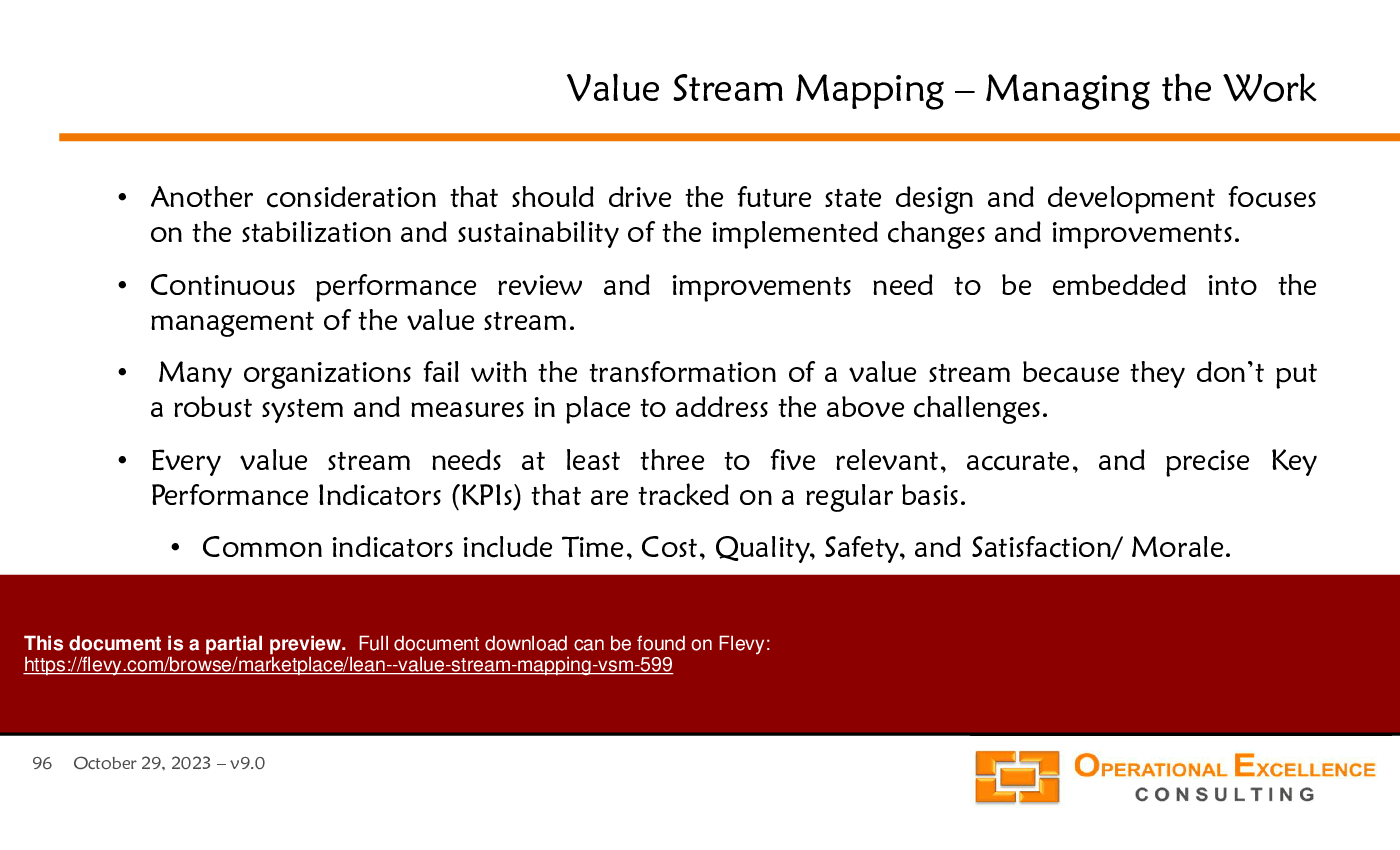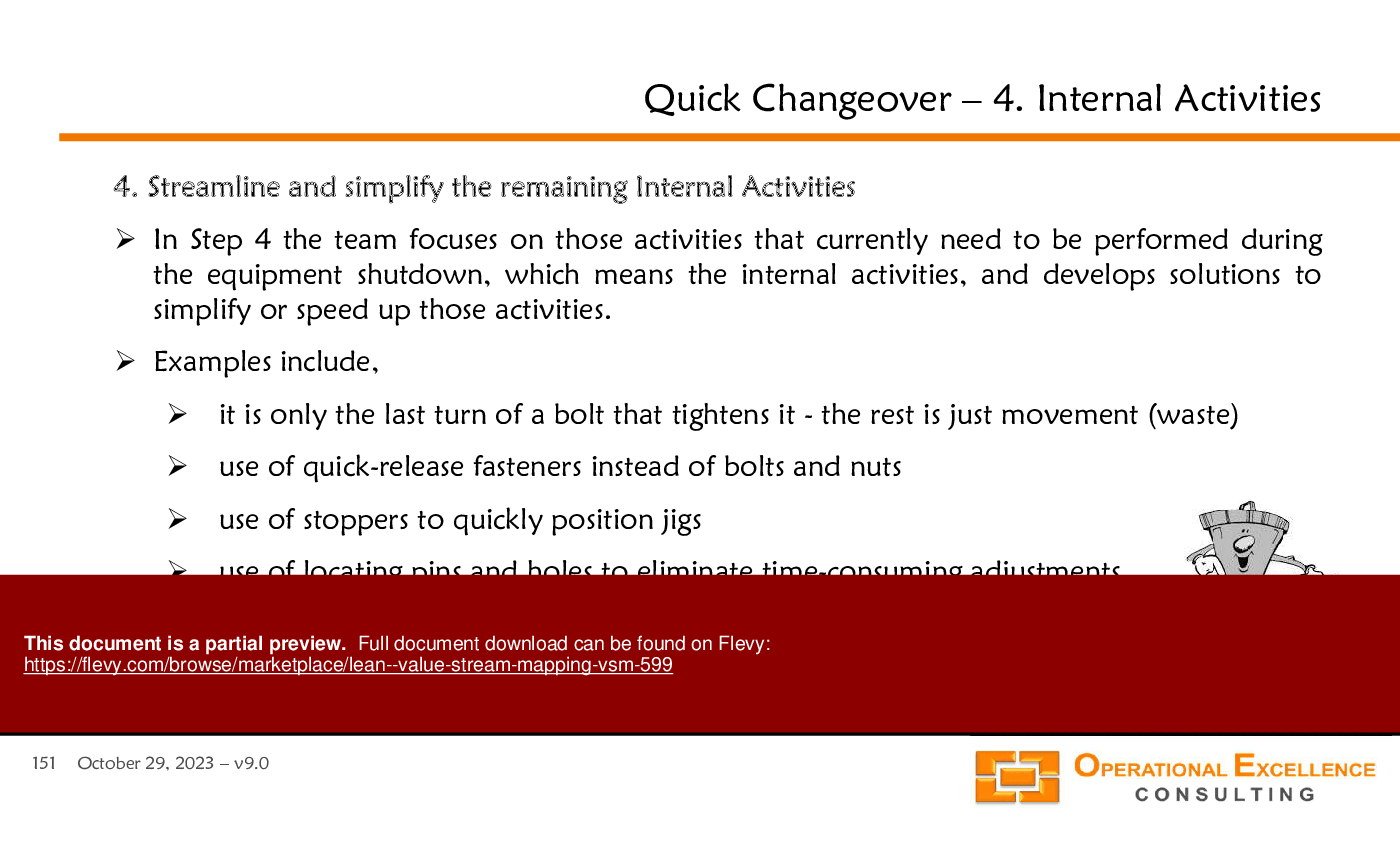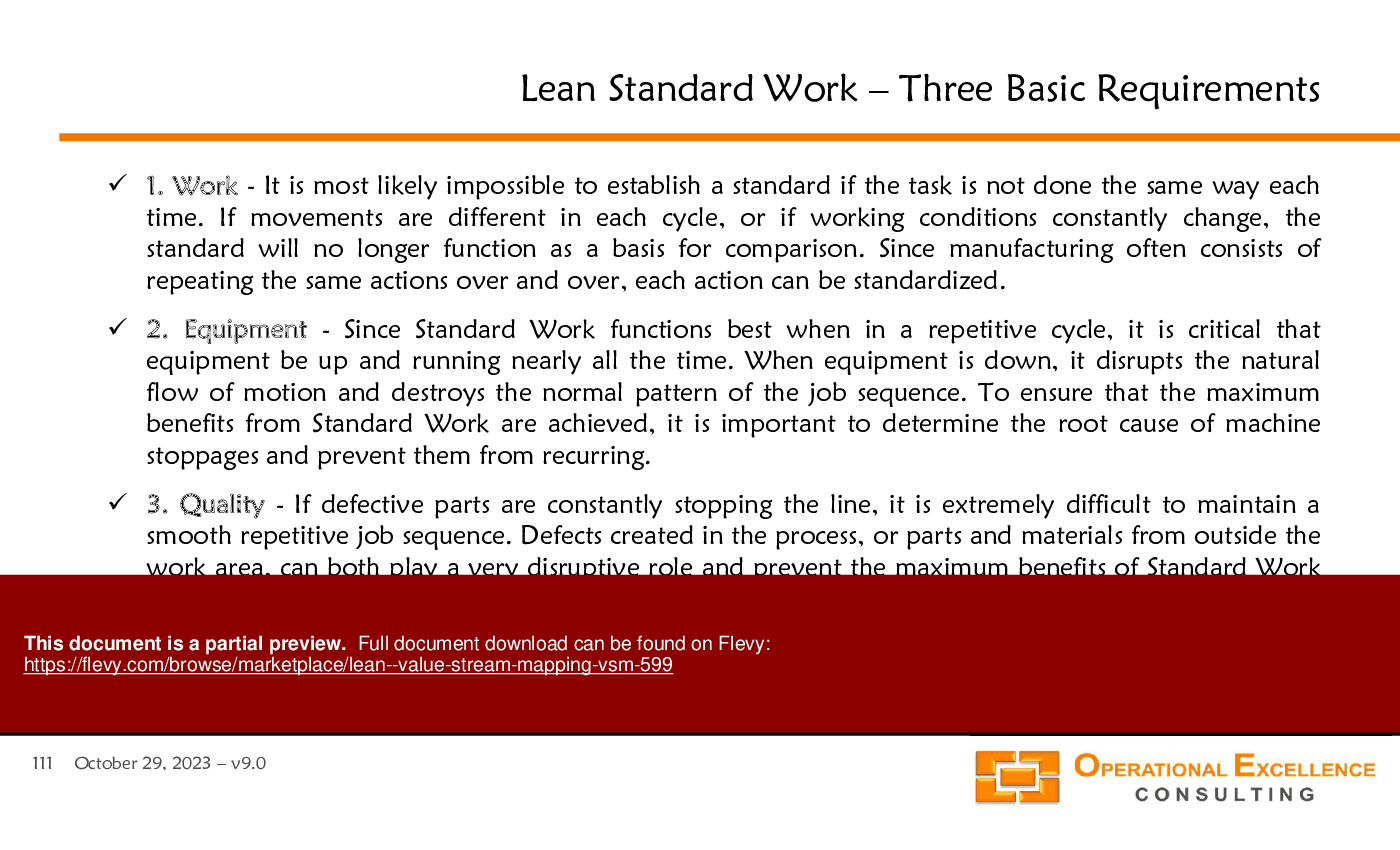Lean - Value Stream Mapping (VSM) (PowerPoint PPTX Slide Deck)
PowerPoint (PPTX) + Excel (XLSX) 157 Slides
BENEFITS OF THIS POWERPOINT DOCUMENT
- enables broad cross-functional participation in documenting the current state and shaping the future,
- shows the linkage between material flow and information flow, and
- provides a powerful tool in identifying waste, so it can be eliminated, contributing to shorter lead times and lower costs.
OPERATIONAL EXCELLENCE PPT DESCRIPTION
Value Stream Mapping (VSM) is a lean management technique used to analyze the flow of materials and information currently required to bring a product or service to a Customer. The goal of value stream mapping is to reduce the end-to-end lead time of a process by highlighting and eliminating sources of waste, as well as by building processes and value chain where the individual process steps are directly linked to their customers either by continuous flow or by pull.
The Lean – Value Stream Mapping (VSM) Training Module includes:
1. MS PowerPoint Presentation including 158 slides covering
• History of Lean Manufacturing,
• The Five Lean Principles,
• The Seven Lean Wastes,
• A Step-by-Step Approach to Value Stream Mapping, and
• Basic Lean Management Methods and Tools.
2. MS Excel Value Stream Mapping Team Charter Template, Future State Transformation Plan Template, Process Study Worksheet Template & Example, Work Chart Template, Work Combination Table Template & Example, and Process Capacity Worksheet Template & Example.
"After you have downloaded the training material, you can change any part of the training material and remove all logos and references to Operational Excellence Consulting. You can share the material with your colleagues and clients, and re-use it as you need. The only restriction is that you cannot publicly re-distribute, sell, rent or license the material as though it is your own. Thank you."
This comprehensive module delves into the historical evolution of lean management, providing context and foundational knowledge. It includes multimedia elements like the Ford Model T video to illustrate real-world applications. The training material meticulously defines value-added work and identifies the seven types of waste, offering practical examples and causes. Detailed templates and worksheets facilitate hands-on learning and implementation. The module also covers essential lean tools such as Kanban systems and 5S visual workplace, ensuring a holistic understanding of lean principles. This resource is indispensable for executives aiming to streamline operations and enhance efficiency.
Got a question about the product? Email us at support@flevy.com or ask the author directly by using the "Ask the Author a Question" form. If you cannot view the preview above this document description, go here to view the large preview instead.
Source: Best Practices in Operational Excellence, Lean, Value Stream Mapping PowerPoint Slides: Lean - Value Stream Mapping (VSM) PowerPoint (PPTX) Presentation Slide Deck, Operational Excellence Consulting LLC
OPERATIONAL EXCELLENCE PPT SLIDES
